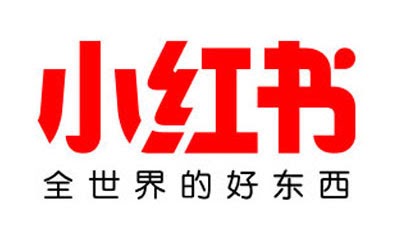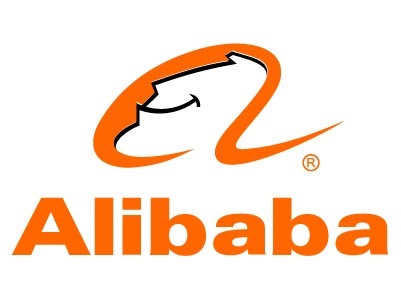The biggest ecommerce companies in China — a brief guide
China’s ecommerce market is complex, massive, and highly competitive. Its companies and their business models are completely different from those in other markets, and none of the big American and European players have any real presence. This is a guide to the major Chinese players and their offerings.

COVID-19 stay-at-home orders were a huge boost for ecommerce in China as elsewhere. Although the country’s overall retail sales are down, Chinese consumers will spend 144.44 trillion yuan ($20.8 trillion) on retail ecommerce in 2020, up 16% from 2019, according to Emarketer.com. Chinese ecommerce companies have also adapted rapidly to the COVID-19 reality, both by supporting government initiatives — for example, JD.com deployed autonomous vehicles to deliver essential medical supplies in Wuhan — and by launching new services such as contactless delivery to make it easier for consumers to continue shopping during lockdowns.
China’s ecommerce market is made of a complex web of competitors and companions, but the sector is dominated by three companies: Alibaba, JD.com, and Pinduoduo control more than 80% of the market. And the Chinese ecommerce market is like no other. In 2019, China accounted for 56% of the world’s online sales. Over 35% of China’s retail sales occur online, versus 11% in the United States.
This is partially due to Chinese ecommerce companies’ innovations. Popular sites like Pinduoduo utilize a C2M (consumer-to-manufacturer) model, which allows manufacturers to identify exactly what consumers want and the price they’re willing to pay for it, rather than manufacturers relying on marketing, as they do in the traditional manufacturer-to-consumer model. Many ecommerce platforms also utilize innovative tactics such as livestreaming sales — a recent trend that you can think of as a 21st-century equivalent of America’s home shopping networks — and discount shopping festivals. China’s Singles’ Day (also called Double 11), which is comparable with America’s Cyber Monday, generated $38 billion of revenue across platforms in 2019, as compared with the $16.8 billion spent on America’s Black Friday and Cyber Monday combined.
The Chinese ecommerce model may not be easy to replicate in other countries. China’s highly concentrated urban populations, low wages for delivery workers, and early mass adoption of digital payment platforms form an environment particularly well suited for online shopping. Additionally, many Chinese consumers only began having disposable income after the widespread use of the internet, and before many high-end and international brands had the chance to open retail stores in China’s second- and third-tier cities.
This is everything you need to know about the biggest players in Chinese ecommerce.

1. Alibaba
Former English teacher Jack Ma (马云 Mǎ Yún) founded the Alibaba Group in 1999. Today, his company is the biggest ecommerce retailer in the world and he is one of the world’s richest people. Alibaba controls over 50% of China’s ecommerce market. The Alibaba Group owns multiple ecommerce sites:
Taobao Marketplace and Tmall.com are Alibaba’s largest sites targeted at Chinese consumers. On Taobao, both individuals and companies can sell products (like eBay), while on Tmall.com, only recognized companies can sell their products (like Amazon). Brands like Nike often have their own flagship stores on Tmall.com that closely resemble their own websites.
Aliexpress was launched in 2010 as a way for Chinese businesses and individuals to sell their products to international online consumers. Today, it is the most visited ecommerce platform in Russia.
In 2013, Alibaba partnered with six Chinese logistics companies to establish Cainiao, a package delivery and logistics company that allows Alibaba and any other company to manage their own deliveries and logistics.
Alibaba acquired Lazada in 2016, which is headquartered in Singapore and is one of Southeast Asia’s largest ecommerce players. In September 2019, Alibaba acquired Kaola.com — an online marketplace that sells imported products to Chinese consumers — from NetEase for $2 billion.
A key element of Alibaba’s dominance of the Chinese internet sector was its 2004 launch of Alipay. Initially a PayPal clone, the service has grown into one of China’s two major mobile payment systems — the other is WeChat Pay. Alipay is now part of Alibaba affiliate Ant Group, which offers a suite of financial services, including investing, credit, and a variety of insurance products.
2. JD


Jingdong, commonly known as JD.com, is China’s second-biggest ecommerce retailer, holding about 17% of the market in 2019.
JD.com leads China’s ecommerce push toward automated and drone deliveries. Last year, it began construction on a drone airport and unveiled its first autonomous truck. On February 6, 2020, JD.com made its first delivery with an autonomous robot vehicle in Wuhan, delivering medical supplies to a local hospital while eliminating human-to-human contact.
JD.com operates primarily as an Amazon-like direct seller, but also runs a marketplace and, like Alibaba, has its own delivery and logistics network.
Multiple international giants, including Tencent, Google, and Walmart, have invested in JD.com to help it compete with Alibaba.
However, Tencent’s recent moves indicate its strategic partnership with JD.com may soon turn into a rivalry. In early 2020, Tencent reduced its stake in JD.com from 20% to 17.1%. In April, Tencent launched a WeChat mini store, rivaling the JD.com mini store it has displayed in the WeChat app since 2017. Tencent has also increased its investments in MissFresh, an online grocery start-up that competes with JD.com and Walmart’s joint venture, JD Daojia.
3. Pinduoduo
Fueled by its popular group-buying business model, Pinduoduo has skyrocketed since its 2015 launch to become China’s fastest-growing ecommerce company, with 7.3% market share.
In June, Caixin News reported that the five-year-old retailer replaced JD.com for the number two spot in market share domination. Under the group-buying business model, customers are invited to form groups with others who want to buy the same product. This can lead to discounts as steep as 90% if a large enough quantity of the product is purchased. Pinduoduo also touts its consumer-to-manufacturer (C2M) model mentioned above.
Pinduoduo is also China’s largest online seller of agricultural products. It launched AI-driven Duoduo Farm in April 2019 to help farmers in impoverished counties in China sell online and improve their productivity. In January 2020, Pinduoduo launched Duoduo Livestream, which allows salespeople to promote their products on the Pinduoduo app through live video.
The company responded to the COVID-19 outbreak by combining these two services as part of its Help the Farmers campaign. Pinduoduo collects information about surplus agricultural produce and connects farmers with consumers by livestreaming the perishable stock. From February 10 to March 18, the service helped 180,000 farmers sell 120,000 metric tons of agricultural produce.
4. Suning
Founded in 1990, Suning.com began as a brick-and-mortar home appliance store. In 2011, the company began selling its products online and today operates both online and at 1,600 physical outlets. It is China’s fourth-largest ecommerce retailer.
Suning’s third-biggest shareholder is Alibaba’s Taobao, which owns a 19.99% stake in the company.
In 2019, Suning acquired an 80% stake in the Chinese operations of French supermarket chain Carrefour.
5. VIP.com
VIP.com, formerly known as Vipshop, earned its place as China’s fifth-largest ecommerce retailer by providing great deals on luxury and high-end labels. VIP.com claims that it stands out from other ecommerce sites because of its focus on women, who make up over 80% of its consumer base.
Today, VIP.com sells over 20,000 brands and has offices in New York City and Los Angeles. In 2018, it hosted a Chinese fashion showcase as part of London Fashion Week.
6. Little Red Book


Xiaohongshu, known in English as Little Red Book, is a fashion-centered app that combines social media with ecommerce. Influencers film their own reviews of high-end and luxury international products, write fashion blogs, and post other lifestyle content. Users can purchase reviewed products straight from the posts about them. The app claims its name has no connection to the famous book of Chairman Mao quotations.
Xiaohongshu fosters a sense of community amongst its base of fashion-loving young women, who trust its content over the often bot-filled reviews on other ecommerce platforms. About 75% of its 300 million registered users live in first- and second-tier cities.
Xiaohongshu was founded in 2013 as an app to help travelers plan their overseas shopping lists, contributing to its current global and high-end feel. Over 8,000 verified brands feature products on the app, including Kim Kardashian’s makeup line, KKW.
Xiaohongshu is backed by both Alibaba and Tencent. In January, the start-up revealed plans to seek a $6 billion valuation.
7. Tencent
The elephant enters the room.
Tencent, the tech giant that owns WeChat, has been looking for footing in the ecommerce market for years. It owns 17.1% of JD.com and owned part of Pinduoduo until October 2019.
On April 29, Tencent launched Xiao’e Pinpin, a WeChat mini program that uses a group-based social shopping model similar to Pinduoduo’s. In a company statement in July, Tencent’s WeChat announced (in Chinese) that it is testing a new mini store built into the app called Weixin Xiaoshangdian. WeChat’s store will include a livestreaming function.
If successful, WeChat’s mini stores could be a game changer for China’s ecommerce industry.
Although previously not an ecommerce retailer itself, WeChat has been involved with the industry through its mobile payment and advertising services. Its digital payment service, WeChat Pay, reported over 800 million monthly users in 2019. Some bloggers have earned millions of yuan by posting product ads on their WeChat pages.
The app has recently been in mainstream news because of President Donald Trump’s threat to ban it in the U.S.
https://signal.supchina.com/what-is-wechat-the-super-app-you-cant-live-without-in-china/










